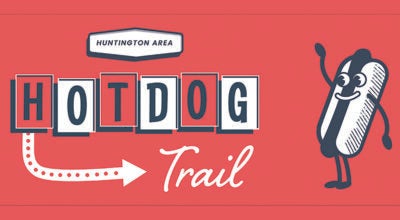Longtime W.Va. newspaperman gets back to writing
Published 9:26 am Tuesday, January 10, 2012
HUNTINGTON, W.Va. (AP) — Early on, Don Hatfield hoped to be a novelist and writer of short stories.
As many hopeful writers do, he took a newspaper job and worked for seven years as a sportswriter in his hometown, then moved to the copy desk.
He continued working on short stories and magazine articles, but then something happened: a long, successful career in running newspapers.
“I started moving up the ladder in the newspaper business,” said Hatfield, sitting at a desk in his home near Ritter Park.
Atop the desk sat several copies of a new short story collection, “A Pocketful of Cinders,” testament to the fact he has found his way back to writing.
More on the book in a moment. But first a look at that career, which took the 76-year-old West Virginia native from the days of hot lead type, manual typewriters and glue pots to computer screens, email and digital publishing.
Also on his desk lay a neat stack of printouts of chapters from an autobiography under way in which he recounts the rungs he climbed going up that ladder. Working title? “Newspaperman.”
“I enjoyed the newsroom,” said Hatfield, who took his first full-bore management job as managing editor of the city’s old evening paper, the Huntington Advertiser, in 1972.
The paper was later combined with the morning paper, the Herald-Dispatch. Hatfield became executive editor in 1979, and then president and publisher in 1982. The paper was part of the Gannett chain and, in 1985, Hatfield was appointed a Gannett regional vice president.
“Then, Gannett asked me to go west and take over our Southwestern papers,” he said.
So, west he and his wife, Sandy, went.
Hatfield became editor and publisher of the Tucson Citizen, and regional vice president of Gannett West, overseeing the El Paso Times and Santa Fe New Mexican. He also was briefly in charge of a USA Today print and distribution center outside Phoenix.
Through it all, it was the daily newsroom in which he took greatest pleasure, he said. That, and a newspaper executive’s ability to make things happen by marshaling a paper’s resources.
“I enjoyed being with reporters and editors and especially young reporters who I felt I could help teach and nurture. And working on significant stories – which unfortunately a lot of papers don’t do much of anymore.”
He presses that last point.
“It disappoints me that not as many newspapers do investigative stories,” he said. “They don’t ask enough questions. I just don’t think a lot of today’s newspapers are ‘news’ papers. Too many have given up the charge of going after the news.
“We used to try and find a mix of providing the reader what the reader wanted as well as what we, the editors, feel the reader needed,” he said. “I think now that’s out of balance, and we find too many newspapers concentrating on giving the reader what they think the reader wants, which is frequently soft stuff and happy stuff.”
Hatfield retired from newspapers in 2000. A few months later, he took a job as vice president for corporate development for the University of Arizona Foundation, then retired from that job in 2007. He and Sandy moved back to Huntington in 2007, where both their sons, Chris and Joel, now live too.
While their initial move out West was a dramatic change, the move back to their hometown four years ago was also a distinct challenge after decades of keeping a home in Tucson and maintaining a fairly high-profile life in Arizona.
Hatfield, for instance, had come to know well Arizona’s prominent senator, John McCain. And the couple were friends with Arizona Congresswoman Gabrielle “Gabbie” Giffords, and were shocked by the assassination attempt on her life in January 2011.
But the quality of life in West Virginia and the chance to keep on writing has helped as Hatfield said goodbye to his Arizona existence, even as he keeps daily tabs on the state’s news via the Web.
“I live near a walking path beside Four Pole Creek here,” he said. “It’s wonderful to walk that path every day. It beats any place I ever walked in Arizona.”
Last August, with help from Hatfield’s former city editor at the Herald-Dispatch, Charlie Bowen, who now runs Design By Bowen, Hatfield put out his print-on-demand short story collection, “A Pocketful of Cinders,” through Amazon.com’s CreateSpace subsidiary.
The book (with a cover illustration by son Chris) is available in print and e-book editions via Amazon.com. Print copies are for sale at Tamarack and the Red Caboose Regional Artisan Center at the Cabell Huntington Convention and Visitors Bureau at Heritage Village.
The nuanced, wide-ranging stories are fictional, yet deeply rooted in Hatfield’s own coming-of-age in the West Virginia hills.
In one, a young boy has a starry-eyed view of a heroic uncle who goes off to save the world in World War II, yet as both of them age, the boy realizes he is neither a hero nor a lout, but something in between. In another, a family of females move in next door to a young man’s house, one of whom stands naked on the back porch facing the main road, as good as a billboard for the services offered within.
While Hatfield says he never grew up beside a brothel (“that’s the fictional part”), a life in close proximity to one’s neighbors, a childhood spent outdoors, a boy’s dreams and hopes – all of that is drawn from the soil and hills of the Mountain State.
“You can’t really read the book and not know how I grew up,” he said. “The characters are fictitious and the events are fictitious. But the atmosphere, the feel for the era – I grew up in the ‘40s and ‘50s, and life was a lot different then – that’s the real part of it.”
The work in progress on his desk is ample evidence that he has many more chapters to go, now that he’s back in the place where he began.
“I’m glad to be back,” Hatfield said. “It’s a good place to live, underappreciated by a lot of people who live here.
“I miss my friends in Tucson – but I’m back home.”



